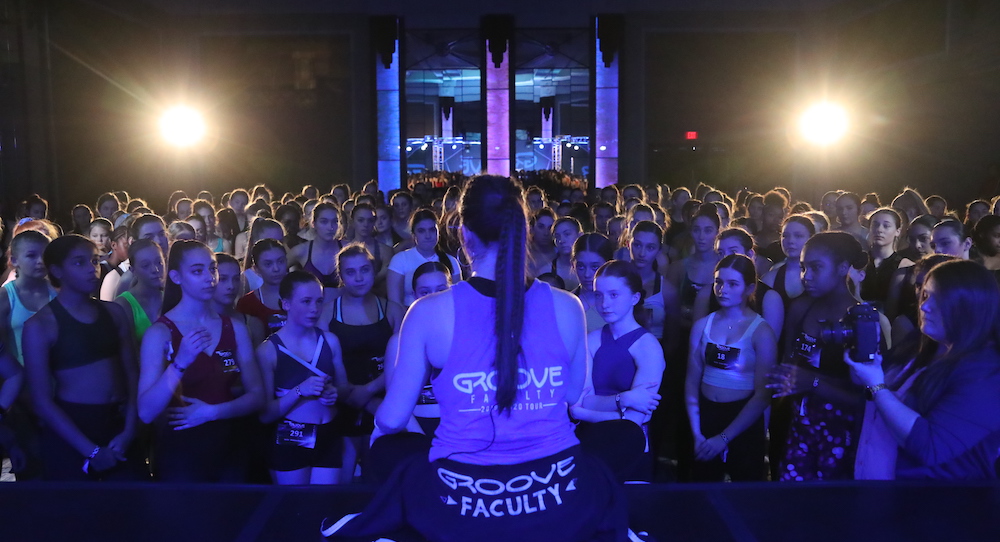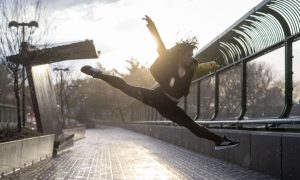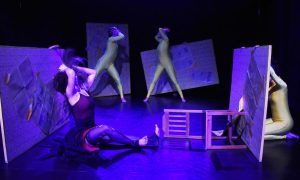Dancers have been stuck at home for months now, taking class on their hard, slippery wood floor or holding on to chairs for their ballet barre. Alone. Dance is such an intimate artform, and community and being face-to-face with others is a huge part of why dancers love what they do. Along with that irreplaceable feeling of performing – the thrill, the energy. Dancers are so eager to return to the stage.
But students aren’t the only ones who are looking forward to getting back to life pre-COVID. Teachers, convention faculty and competition judges are so excited to get back to the energy and excitement of a live dance event.
This summer, Groove Dance Competition and Convention has started to go ahead with regional competition events, and more one-day conventions will hit key cities in October and November. Safety precautions will be taken seriously, as the health and safety of all participants and staff is important.
Here, Dance Informa turned to some Groove judges to see how they’ve been navigating this summer through COVID-19 and their advice for returning to face-to-face competitions.
Where have you been quarantined?
Mallory Swanick, convention teacher/judge for Groove Dance Competition and Convention
“I live and have been quarantined in Tampa, Florida.”
Jonathan McGill, judge/teacher for Groove Dance Competition and Convention
“I live and have been quarantined in Los Angeles, California.”
What has your COVID routine looked like?
McGill
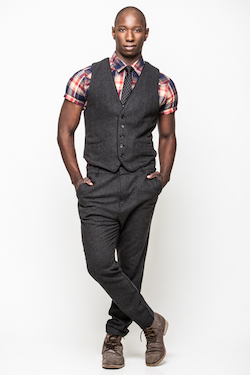
“I found that varying my COVID routine and switching what I focus on from week to week helps to keep it fresh and not feel like I’m stuck on repeat. As far as dance, I try to take two to three classes a week, changing the days I dance and classes I take. It actually took awhile for me to even figure out where and how to create space to teach and take class at home.”
Swanick
“My COVID routine has included teaching technique classes and private lessons from
home via Zoom, FaceTime and Instagram Live. Now that the dance year and summer programs are coming to an end, I’ve been spending more time planning and choreographing dances for the upcoming season so I can be as prepared as possible when it’s safe to return to working in studios. Apart from teaching and choreographing, I have been taking ballet classes via Zoom and have spent extra time conditioning my body and past injuries to avoid any flare ups when my schedule returns to what it was pre-COVID.”
How else have you been navigating through COVID, mentally and physically?
Swanick
“I think we, as humans, feel the implications of life events in peaks and valleys. We have moments of feeling positive, powerful and inspired, followed by periods of feeling down, incapable and fearful. The climate of the world during this pandemic has just amplified these feelings, especially for the arts and entertainment industries whose work has been paused. I constantly try to remind myself that this is simply a pause and not a full stop. I remind myself that dancers and students need every example of resilience. Talking to young dancers about what they’re experiencing, seeing artists continue to find ways of working, talking to friends within the industry on a regular basis and taking time to experiment with my own movement have all kept me going. Additionally, ballet classes have always been a personal and almost meditative practice for me. The progression of class is always similar, but allows for introspection and exploration. That never changes regardless of where one might be taking class. Ballet classes have provided a sense of normalcy throughout this unpredictable time.”
McGill
“For me, I had to figure out a balance between productive days and relaxing days. At the beginning, I was extremely motivated and wanted this time at home to be ‘the most productive’, so I was doing everything from constantly cleaning to attempting to learn another language. I have a tendency to take on too many things at once, which led to me being burnt out by the fourth or fifth week. Once I realized that I’d be at home a lot longer than anticipated, I basically had to schedule weekly ‘re-charge’ days for myself, when I would take a day to rest, relax and virtually connect with friends.”
What do you miss most about the face-to-face dancing and competitions?
McGill
“I really miss full-length mirrors and having space to travel. That struggle is so real!”
Swanick
“Undoubtedly, the energy in the room and ability to connect with dancers are the two things I miss most about face-to-face dancing and competitions. Nothing beats the sense of adrenaline one feels when they are in the presence of a dancer or dancers truly working and pushing themselves. Whether it’s in class or on a stage, that energy is inspiring. There is a sense of safety in being in a room full of artists where you know vulnerability is encouraged and individuals are accepted; that experience is simply irreplaceable. Of course, I also miss being able to step into a dance community during a competition weekend and observe what each region excels in and contributes to the industry.”
Have you seen any silver lining throughout this whole pandemic?
Swanick
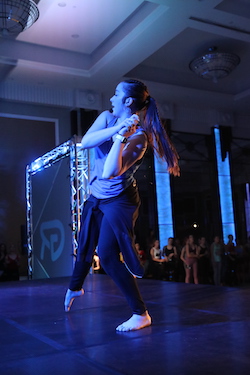
“Often, we can relate to other individuals knowing that we all experience the same feelings. We know what it feels like to be sad, frustrated, inspired, tired, unstoppable, capable. However, we’ve each come to feel these emotions in our own way. We have each had different experiences, perhaps in different stages of life to reflect upon, learn from and communicate with others. This pandemic is a rare situation that everyone is experiencing at the same time. We will all be able to connect in a way that we couldn’t before. I believe the perseverance and unison that artists have cultivated during this time will only make us stronger. While the world is struggling, in so many ways this industry has found a way to come together.
It has been inspiring to see how individuals and companies alike have responded to the pandemic. Entrepreneurial endeavors have been pursued when individuals saw the industry was lacking a service. Dancers, dance educators and others adjusted to this new way of working because they knew if they did not adjust, their industry could potentially dissipate. Just as inspiring are the ‘intrepreneurial’ endeavors pursued by existing companies. Across the industry, but specifically competitions and conventions have found new ways of conducting business and keeping their customers/users/participants involved. Online dance competitions emerged. Instagram Live classes and Zoom conventions have grown in popularity. I believe the entrepreneurial and ‘intrepreneurial’ efforts will continue beyond this pandemic and will only make in-person experiences even better.
There have also been opportunities provided for dancers to take class from other artists around the world all from home, therefore eliminating otherwise hefty expenses. There is a silver lining in knowing that we can continue to use these platforms once this period of time passes. We can continue to learn from others beyond our own community. I will be celebrating when travel is safe again but selfishly have appreciated both the time and opportunity to take class from some of my favorite artists while staying safe at home.”
McGill
“I would say one silver lining is the ability to take classes from teachers that we normally might not have access to. With technology and virtual platforms, we’re now able to expand our training and take class from practically anyone. I’ve also gotten to re-connect with friends and old castmates, which has been so refreshing and exciting.”
As some studios start to reopen and some competitions may start, what is your advice for returning to dance safely?
Swanick
“Take every safety precaution recommended to protect both yourself and others. Whether it be a health precaution or a precaution to avoid injury after time spent outside of the studio, do what you need to do to best ensure safety. I am a huge advocate for wearing masks while dancing. Unless you have been advised by a doctor not to wear a mask, it is certainly possible to wear one while exercising. You will maintain your oxygen levels and keep others healthy in an environment where lots of heavy breathing and sweating takes place.”
McGill
“Spatial awareness and class etiquette, I think, are two very important factors that will help dancers with a safer return to class. Things like making sure you’re not standing directly in front of or too close to another dancer during warm-up, staying in your window during choreography or taller dancers standing toward the back so that everyone can see the teacher. These are things we don’t necessarily have to worry or think about when dancing at home by ourselves, but they can make a huge difference in the classroom.”
Dancers have been taking classes at home, perhaps not doing some things like big jumps full out due to space or flooring. What’s your advice for making a safe, injury-free return to in-person dancing and competitions?
McGill
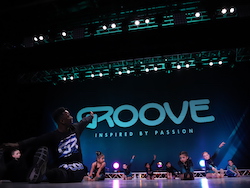
“Jumping has been a challenge for me during this time. I’m tall and my ceilings are short, so I’ve had to get creative and modify to avoid hitting the ceiling or kicking the sofa. A thorough head-to-toe warm-up, improving ankle strength and stability, and working to have more elasticity in your plié are going to be great tools for safely getting back into dancing more full out. Also, once you have a return date for in-studio classes, give yourself a week or two before to work on re-building your stamina and endurance!”
Swanick
“Take it day by day. It will take time to get back to what class was before the pandemic. You do not want to sacrifice your safety and further delay your return. Take time to complete foot exercises, find strength in relevés, and be aware that everyone is in the same boat. We will all do saut de chats again!”
What are you most looking forward to about returning to face-to-face competitions and seeing dancers live and in the flesh?
Swanick
“I am most looking forward to celebrating dance when we return to face-to-face competitions and seeing dancers live! I cannot wait to see a room full of dancers all moving together, relishing in the experience and feeling more alive than ever before. Their studios have all worked so hard to provide dance instruction during a time of uncertainty, and I am excited to see what the dancers will bring the classes and the stage. And when I get to witness it in person again, I will be smiling ear to ear!”
McGill
“I’m looking forward to the energy and excitement that a competition weekend brings. It’s a feeling like no other. No matter how long the days are, I always leave each weekend feeling inspired by all of the talent.”
For information on Groove Dance Competition and Convention’s upcoming live events, visit www.groovecompetition.com.
By Laura Di Orio of Dance Informa.


